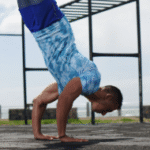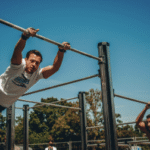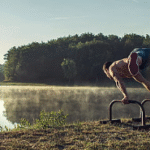Handstand Progressions: Step-by-Step to Success
The handstand is a foundational calisthenics skill that requires a combination of strength, balance, and coordination. It’s a challenging but rewarding movement that can be achieved with consistent practice and a focus on proper progressions. Here’s a detailed, step-by-step guide to help you master the handstand:
1. Build Foundational Strength
Wrist Preparation:
Wrist mobility: Perform wrist circles, flexions, and extensions to improve wrist flexibility and strength.
Wrist push-ups: Start with incline wrist push-ups against a wall and gradually progress to flat ground wrist push-ups.
Shoulder and Core Strength:
Pike push-ups: Perform pike push-ups with your hips elevated to strengthen your shoulders and core.
Plank variations: Practice planks, side planks, and reverse planks to build core stability.
Wall walks: Start in a push-up position facing a wall and walk your feet up the wall while walking your hands closer to the wall. This strengthens your shoulders and core while getting you comfortable being upside down.
Handstand Holds Against the Wall:
Kick-ups: Practice kicking up into a handstand against the wall, focusing on bringing your legs up together and maintaining a straight line from your hands to your feet.
Wall holds: Hold the handstand against the wall for increasing durations, building strength and endurance in your shoulders, core, and wrists.
2. Develop Handstand-Specific Skills
Balance and Alignment:
Wall floats: Practice floating your feet off the wall for short periods, focusing on finding your balance point and maintaining a straight line.
Line drills: Use a line on the floor or a yoga mat to practice aligning your hands and body in a straight line.
Body Awareness and Control:
Shoulder shrugs: While in a wall handstand, practice shrugging your shoulders towards your ears and then depressing them back down. This improves shoulder stability and control.
Feet flexions and pointes: Alternate between flexing and pointing your feet while in a wall handstand to improve body awareness and control.
Exiting the Handstand:
Cartwheels: Practice cartwheeling out of the handstand to develop a safe and controlled exit strategy.
Pirouettes: Learn to pirouette out of the handstand by rotating your body 180 degrees and landing on your feet.
3. Progress to Freestanding Handstands
Kick-ups with a Spotter: Practice kick-ups with a spotter to help you find your balance and gain confidence in a freestanding handstand.
Freestanding Holds: Gradually increase the duration of your freestanding handstand holds, focusing on maintaining a straight line and engaging your core.
Handstand Walking: Once you can hold a freestanding handstand, start practicing walking on your hands. This requires greater balance and control.
4. Refine Your Technique
Hand Placement: Experiment with hand placement to find what feels most comfortable and stable for you. Generally, your hands should be shoulder-width apart with your fingers pointing forward.
Shoulder Engagement: Keep your shoulders actively engaged by pushing them towards your ears. This helps create a stable base and prevents your shoulders from collapsing.
Core Engagement: Engage your core muscles to maintain a straight line from your hands to your feet. This prevents your back from arching and helps you stay balanced.
Line Drills: Continue practicing line drills to refine your alignment and ensure your body is in a straight line.
5. Additional Tips
Consistency: Practice regularly, aiming for at least 3-4 sessions per week.
Patience: Mastering the handstand takes time and patience. Don’t get discouraged if you don’t see results immediately.
Listen to Your Body: Rest when needed and avoid pushing yourself beyond your limits.
Warm-up: Always warm up before practicing handstands to prepare your wrists, shoulders, and core.
Flexibility: Incorporate flexibility exercises into your routine to improve shoulder and hamstring flexibility.
Strength Training: Continue to build strength in your wrists, shoulders, and core with complementary exercises.
Visualization: Visualize yourself performing a perfect handstand to improve your technique and build confidence.
Have Fun: Enjoy the process of learning and mastering the handstand. It’s a challenging but rewarding skill that can enhance your overall fitness and well-being.
By following these progressions and tips, you can gradually develop the strength, balance, and coordination needed to achieve a freestanding handstand. Remember to be patient, consistent, and persistent in your practice, and celebrate your progress along the way.

Handstand Progressions: Step-by-Step to Success
Route
Calisthenics Gym Houston Functional Bodyweight Training
Secondary phone: (346) 483-3195
Email: info@calisthenicsclubhouston.com
URL: https://calisthenicsclubhouston.com/
Monday 6:00 AM - 7:00 PM Tuesday 6:00 AM - 7:00 PM Wednesday 6:00 AM - 7:00 PM Thursday 6:00 AM - 7:00 PM Friday 12:00 PM - 6:30 PM Saturday 9:45 AM - 12:00 PM Sunday 3:00 PM - 5:00 PM





